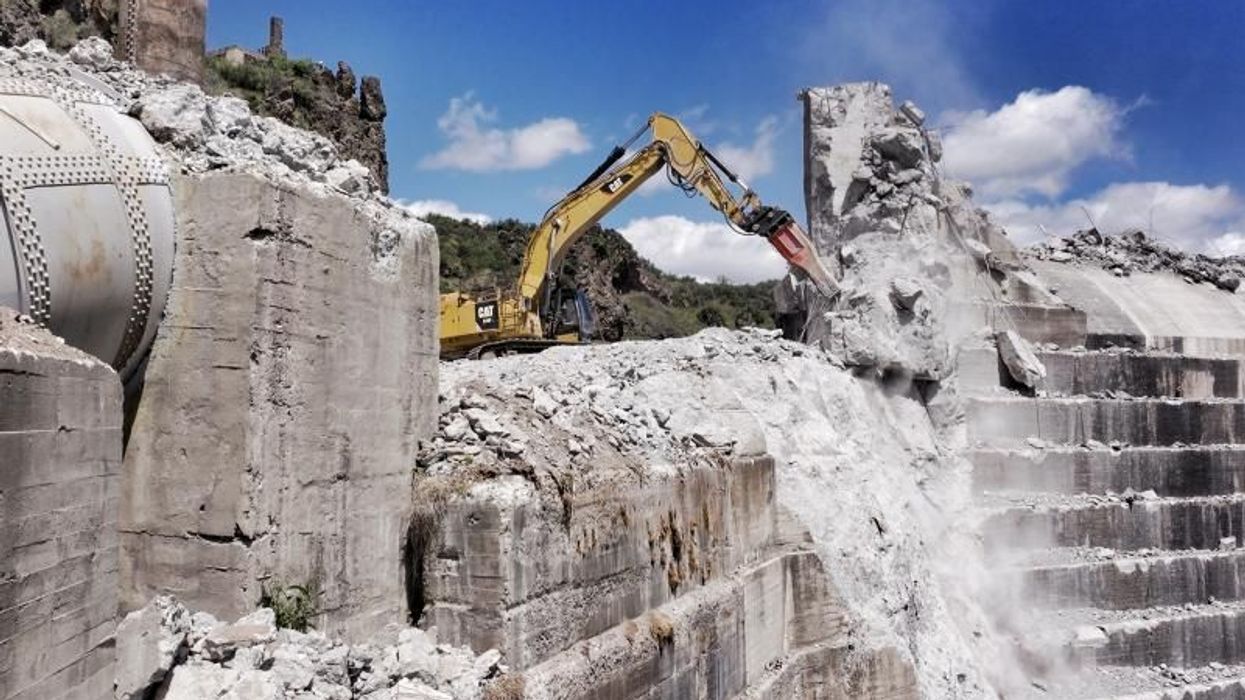The US Isn’t Leading at COP30—But It Is Un-Damming Its Way to Climate Resilience
By removing obsolete dams, the US is reducing greenhouse gas emissions and building climate resilience.
As delegates huddle in Belém, Brazil for the 30th United Nations Climate Change Conference, or COP30, they are considering how to prevent runaway climate change, and also how to bolster resilience to extreme weather. The United States won’t have much to offer officially—the Trump administration has said it won’t send any high-level delegates. And with President Donald Trump pulling the US out of the Paris Climate Agreement earlier this year, the country is far from a climate leader these days.
But all is not lost. Local level climate work continues in the United States, with accomplishments worth cheering—and replicating. For the last few years, I’ve tracked one of the most overlooked: the removal of harmful and obsolete dams. The United States has been leading the global charge on dam removals. In just the last 25 years nearly 2,000 dams have been blasted and backhoed from our rivers and streams.
Dam removals, like the four-dam effort completed last year on the Klamath River, are often celebrated for helping imperiled fish, like salmon. But they also offer two important benefits for the climate.
The first is reducing emissions. A growing body of scientific research dating back to the 1990s has found that reservoirs from dams can produce greenhouse gas emissions, some on par with thermal power plants. The biggest culprit is methane, a potent greenhouse gas that traps 80 times more heat as carbon dioxide over 20 years. As organic material breaks down in a reservoir, methane is diffused from the water into the air.
Dam removals aren’t a climate cure-all, but the magnitude of the crisis we face will require all the tools we can muster—and master.
As we take stock of our greenhouse gas emissions, an honest accounting of the input from dams could help us make reductions where dams are unneeded, unsafe, or doing more harm than good. In some states there are thousands of “deadbeat” dams, which serve no purpose at all anymore, and should be put on the chopping block. And if you’re wondering if it makes sense to remove infrastructure that can produce “clean” energy, know that the vast majority of large US dams—upward of 97%—don’t produce power.
The second is strengthening resilience. Many dams are outdated, dilapidated, or not designed to handle the onslaught of water that comes with climate-amplified storms. Some have already failed, risking lives and costing millions. After Hurricane Helene slammed North Carolina last year, 40 dams were damaged or destroyed. Expect to see more of that. A recent report from researchers at Utah State University found that incidents of dam failures or interventions needed to prevent failures are skyrocketing. From 1990 to 1999 we averaged two such incidents a year. That number jumped to an average of 50 a year from 2020 to 2023.
After two years of dangerous floods, Vermont has gotten the message. Last year the state passed a law to identify dams that worsen flooding and create a fund to remove them. Other states are also assessing dam removal to boost climate resilience. Removing damaging dams and helping rivers reconnect with their floodplains can help protect communities from severe weather and save money.
Dam removals offer other climate resilience benefits. Dams hold back water, but they also block the movement of sediment, which depletes coastal beaches and speeds erosion. One of the most notorious examples is the Matilija Dam near Ojai, California, a now-defunct dam that has corralled nearly 9 million cubic yards of sediment. Removing Matilija would reinvigorate downstream beaches in Ventura. As rising seas eat away at ocean beaches, upstream dam removals can help protect coastal communities.
Dams also change the temperature of rivers. As climate change pushes up the mercury, some reservoirs are becoming more like bathtubs. Higher water temperatures can foster toxic algal blooms that threaten human health and kill wildlife. Dam removals can flip the script, helping to restore more natural stream temperatures and flows, improving water quality in rivers that millions of Americans rely on for drinking water. It can also support biodiversity by enabling aquatic animals to find cooler upstream waters to better weather our changing climate.
Dam removals aren’t a climate cure-all, but the magnitude of the crisis we face will require all the tools we can muster—and master. Several decades of dam removals across the US has proved they work to restore rivers better and faster than anything else. Now let’s put them to use for climate action, too


